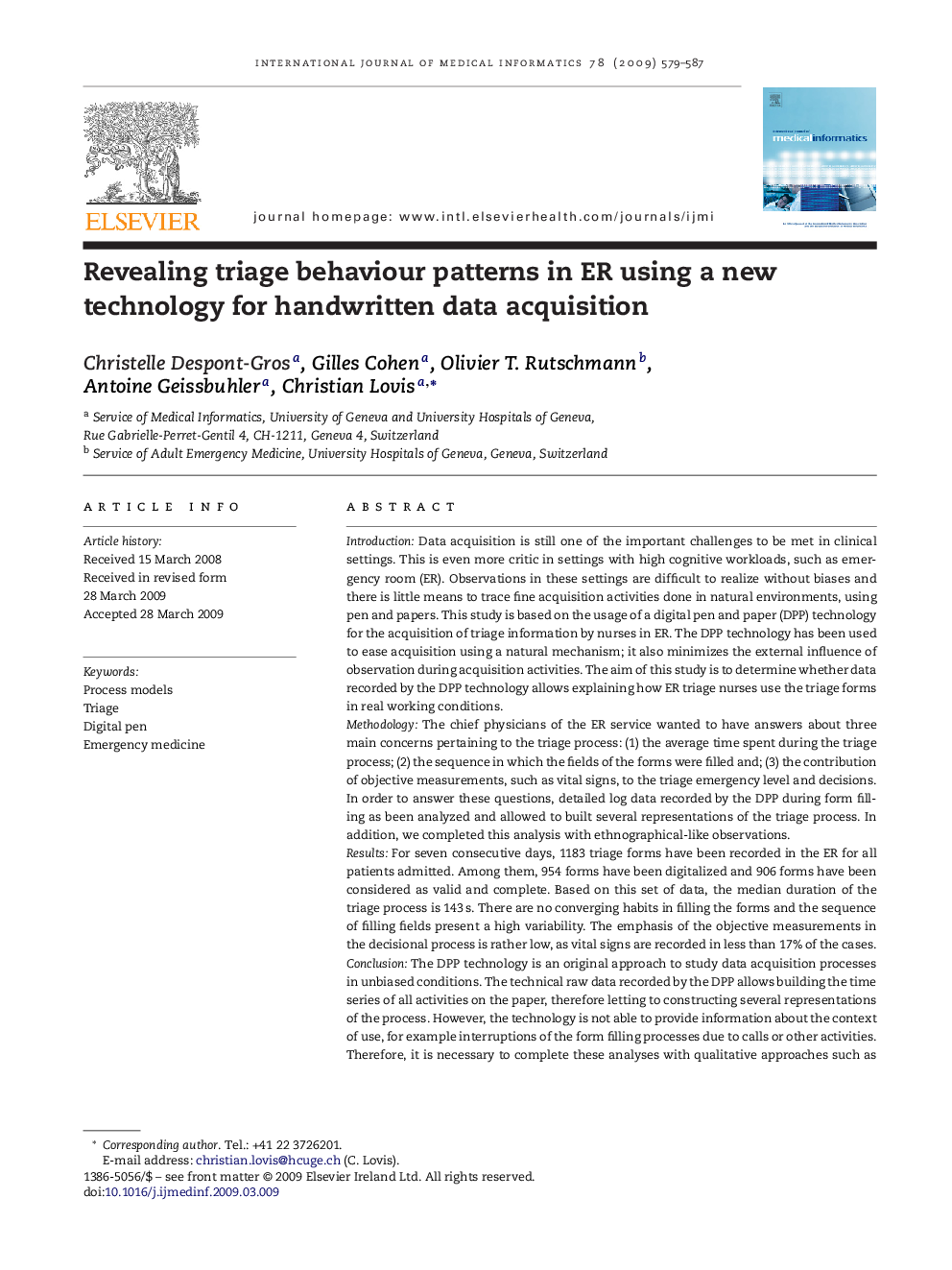| کد مقاله | کد نشریه | سال انتشار | مقاله انگلیسی | نسخه تمام متن |
|---|---|---|---|---|
| 516353 | 1449179 | 2009 | 9 صفحه PDF | دانلود رایگان |

IntroductionData acquisition is still one of the important challenges to be met in clinical settings. This is even more critic in settings with high cognitive workloads, such as emergency room (ER). Observations in these settings are difficult to realize without biases and there is little means to trace fine acquisition activities done in natural environments, using pen and papers. This study is based on the usage of a digital pen and paper (DPP) technology for the acquisition of triage information by nurses in ER. The DPP technology has been used to ease acquisition using a natural mechanism; it also minimizes the external influence of observation during acquisition activities. The aim of this study is to determine whether data recorded by the DPP technology allows explaining how ER triage nurses use the triage forms in real working conditions.MethodologyThe chief physicians of the ER service wanted to have answers about three main concerns pertaining to the triage process: (1) the average time spent during the triage process; (2) the sequence in which the fields of the forms were filled and; (3) the contribution of objective measurements, such as vital signs, to the triage emergency level and decisions. In order to answer these questions, detailed log data recorded by the DPP during form filling as been analyzed and allowed to built several representations of the triage process. In addition, we completed this analysis with ethnographical-like observations.ResultsFor seven consecutive days, 1183 triage forms have been recorded in the ER for all patients admitted. Among them, 954 forms have been digitalized and 906 forms have been considered as valid and complete. Based on this set of data, the median duration of the triage process is 143 s. There are no converging habits in filling the forms and the sequence of filling fields present a high variability. The emphasis of the objective measurements in the decisional process is rather low, as vital signs are recorded in less than 17% of the cases.ConclusionThe DPP technology is an original approach to study data acquisition processes in unbiased conditions. The technical raw data recorded by the DPP allows building the time series of all activities on the paper, therefore letting to constructing several representations of the process. However, the technology is not able to provide information about the context of use, for example interruptions of the form filling processes due to calls or other activities. Therefore, it is necessary to complete these analyses with qualitative approaches such as observational studies and interviews. Noticeably, as a result of this study, the head physicians of ER have redesigned the triage form to enforce the use of objective measurements and ease the data acquisition process.
Journal: International Journal of Medical Informatics - Volume 78, Issue 9, September 2009, Pages 579–587